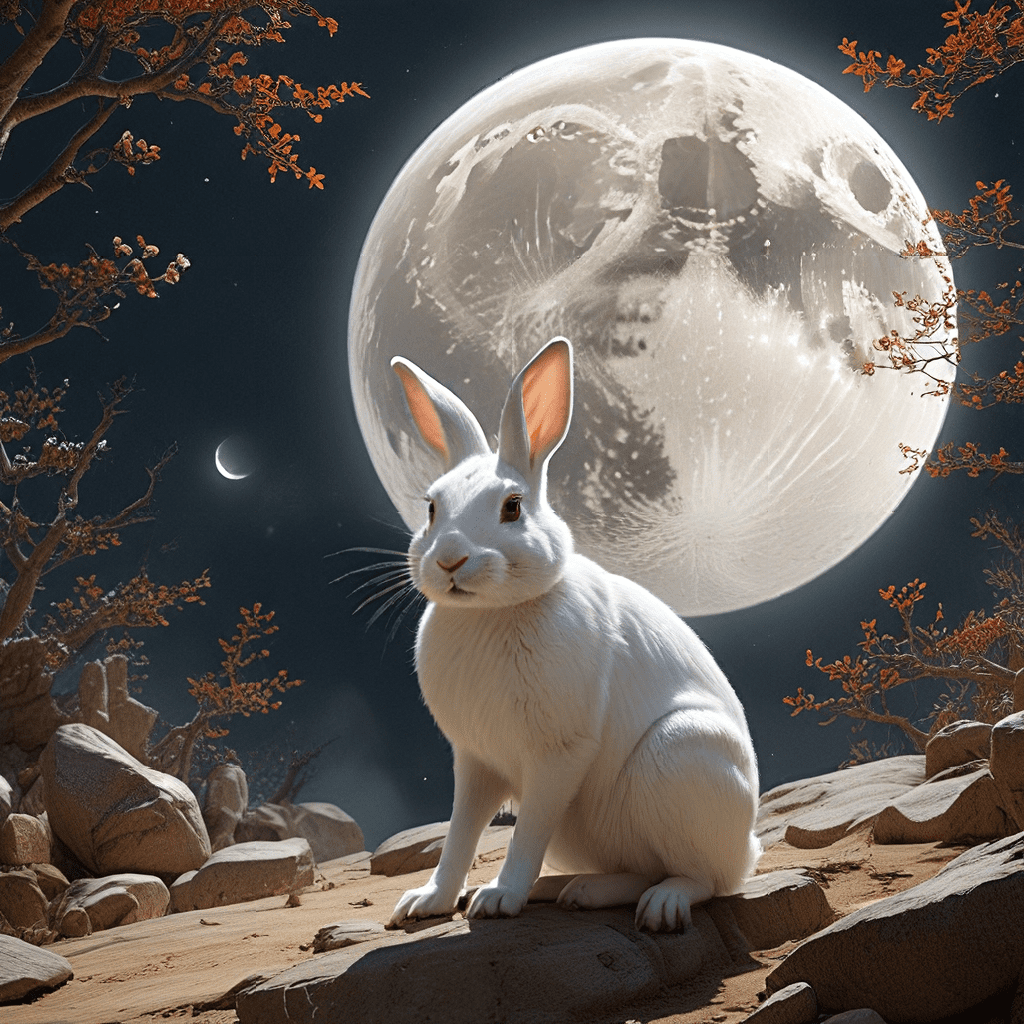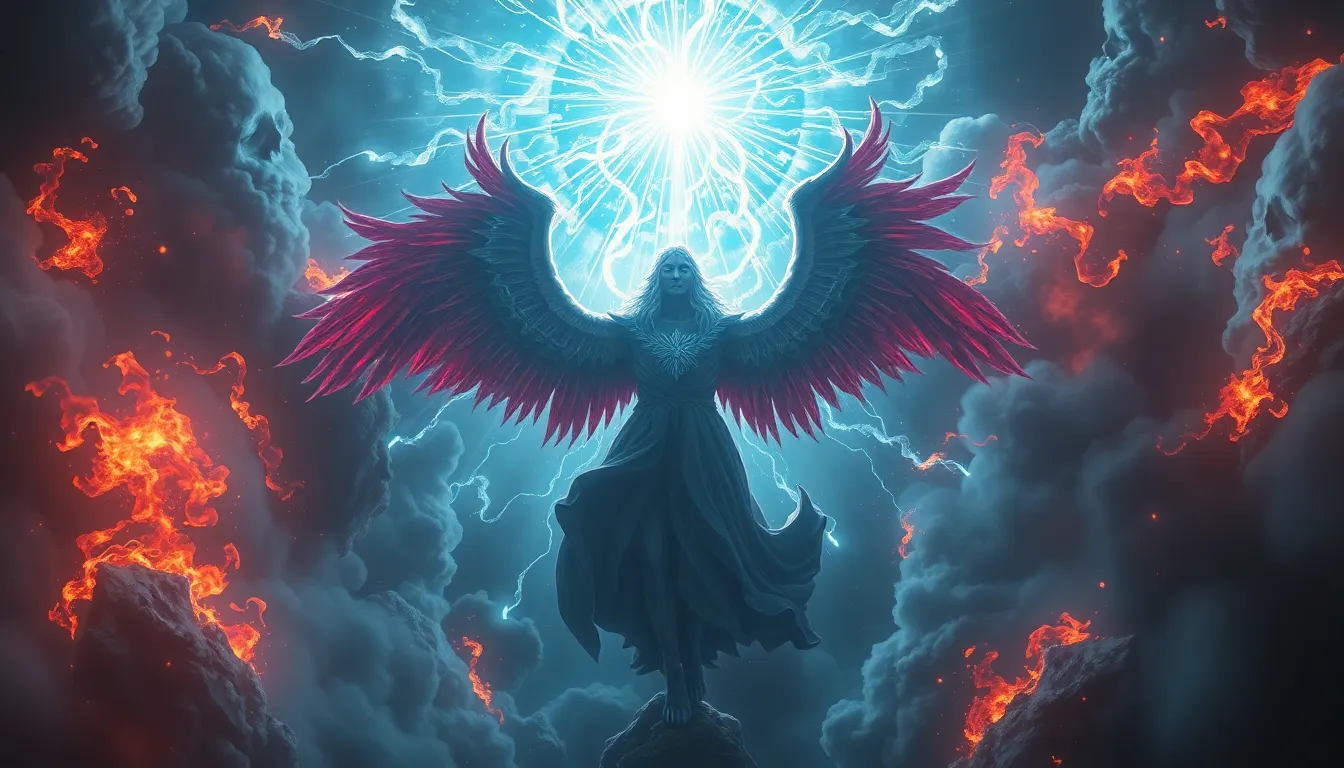The Rabbit in the Moon: A Korean Folktale
In Korean mythology, one of the most enduring and beloved tales is the story of the rabbit who resides on the moon. This tale, which has been passed down through generations, holds a special place in Korean culture, offering insights into traditional beliefs and values. The myth of the Moon Rabbit is not just a captivating story; it's a window into the spiritual and philosophical world of the Korean people.
The Myth’s Origins
The origins of the Korean Moon Rabbit myth can be traced back to ancient times, when people looked to the heavens for answers to life's mysteries. The moon, with its cyclical phases, was seen as a powerful symbol of change, renewal, and the passage of time. Its mysterious glow inspired countless stories and legends across different cultures.
The Moon Rabbit myth, specifically, is believed to have originated during the Silla dynasty (57 BC – 935 AD), a period marked by the flourishing of Korean art and literature. During this time, Buddhism, with its emphasis on compassion and self-sacrifice, was introduced to Korea, influencing the development of the myth.
The Tale of the Rabbit and the Old Woman
The story of the Moon Rabbit is often told as a tale of compassion and sacrifice. It tells of an old woman who, despite her poverty, offered all her food to a starving rabbit. Moved by her kindness, the rabbit revealed himself to be a celestial being, a messenger of the Moon Goddess.
The Moon Goddess, impressed by the woman's generosity, invited both the old woman and the rabbit to live with her on the moon. The rabbit, however, was tasked with a special duty. He was to prepare a magical elixir that would grant immortality to those who consumed it.
The Moon Rabbit’s Sacrifice
The myth tells us that the Moon Rabbit, with his tireless efforts, pounded the elixir for all eternity. He was so dedicated to his duty that he never left his post, even though he was surrounded by the Moon Goddess's luxurious surroundings.
This sacrifice, the constant pounding of the elixir, is often depicted in Korean art, showing the rabbit with a large mortar and pestle. He embodies the spirit of selflessness and the importance of fulfilling one's purpose, even at the cost of personal comfort.
Symbolism of the Moon Rabbit
The Moon Rabbit in Korean mythology holds several symbolic meanings, reflecting the values and aspirations of the Korean people. Here are some key interpretations:
-
Immortality and Renewal: The Moon Rabbit's task of preparing the elixir of immortality connects him to themes of eternal life and renewal. In a world where life is finite, the rabbit's tireless work represents the desire for something beyond the earthly realm, a longing for something everlasting.
-
Selflessness and Duty: The Moon Rabbit's sacrifice in tirelessly pounding the elixir exemplifies the virtues of selflessness and fulfilling one's duty, even at the cost of personal comfort. His dedication to his task, even in the face of temptation, embodies the spirit of sacrifice that is highly valued in Korean culture.
-
Compassion and Generosity: The story of the old woman and the rabbit underlines the importance of compassion and generosity. The rabbit's gratitude for the woman's kindness shows that even celestial beings can be touched by human compassion. This reinforces the belief that good deeds always have positive consequences, even in the face of adversity.
- Creativity and Transformation: The act of pounding the elixir can be seen as a metaphor for the creative process, where raw materials are transformed into something valuable. This symbolism connects the Moon Rabbit to the concept of artistic expression and the constant striving for self-improvement.
The Rabbit as a Lunar Deity
The Moon Rabbit, while not a primary deity in Korean mythology, is often depicted as a celestial being associated with the moon. This connection to the lunar realm elevates him to a position of significance and reverence.
The moon, in Korean culture, is seen as a powerful symbol of feminine energy, representing change, growth, and the cyclical nature of life. The Moon Rabbit, through his association with the moon, embodies these qualities, serving as a symbol of the divine feminine.
The Moon Rabbit's association with the lunar realm also connects him to various beliefs about the moon's influence on human life. Some believe that the moon affects emotions, while others see it as a source of inspiration and guidance. These beliefs further contribute to the Moon Rabbit's symbolic significance in Korean culture.
The Moon Rabbit’s Role in Korean Culture
The Moon Rabbit myth has deeply embedded itself within Korean culture, playing a significant role in various aspects of life, including:
-
Folklore and Storytelling: The legend of the Moon Rabbit is a beloved part of Korean folklore, passed down through generations. It is often incorporated into traditional songs, dances, and plays, helping to preserve and transmit cultural values.
-
Art and Literature: The myth is frequently depicted in Korean art, from intricate paintings to delicate ceramics. The Moon Rabbit motif appears in various forms, representing the rabbit pounding the elixir, looking out over the lunar landscape, or holding a mortar and pestle.
-
Festivals and Celebrations: The Moon Rabbit myth is often invoked during festivals, such as the Chuseok harvest festival, when people gather to celebrate the moon's fullness and give thanks for a bountiful harvest.
- Naming and Symbolism: The image of the Moon Rabbit is often incorporated into personal names, businesses, and everyday items, reflecting its widespread cultural recognition and admiration.
Theories on the Myth’s Origins
The origin of the Moon Rabbit myth in Korea, like many other folk tales, is shrouded in mystery, but several theories have been proposed to explain its emergence.
-
Ancient Beliefs: Some scholars believe that the myth originated from ancient beliefs about the moon and its connection to the natural world. Early Koreans may have observed the moon’s cyclical phases and associated them with concepts like fertility, transformation, and the passage of time.
-
Influence of Buddhism: The arrival of Buddhism in Korea during the Silla dynasty is believed to have strongly influenced the myth's development. Buddhist teachings, with their emphasis on compassion, self-sacrifice, and the pursuit of enlightenment, resonate with the Moon Rabbit's story.
-
Astrological Observations: The myth might have been influenced by astrological observations of the moon, particularly the dark spots on its surface. These spots may have been interpreted as a rabbit pounding a mortar, giving rise to the legend.
- Cultural Exchange: It's possible that the Moon Rabbit myth originated in other cultures and was introduced to Korea through cultural exchange. Similar tales about a creature living on the moon are found in various East Asian cultures, suggesting a potential interconnectedness.
The Influence of Buddhism
The influence of Buddhism on the Moon Rabbit myth is undeniable. Its emphasis on compassion, generosity, and self-sacrifice resonates strongly with the story's core themes.
Buddhist teachings often highlight the importance of selfless acts and the pursuit of enlightenment through hardship. The Moon Rabbit's tireless pounding of the elixir to create the elixir of immortality aligns with the Buddhist concept of karma and the idea that good deeds lead to positive outcomes.
Moreover, the Moon Rabbit's willingness to sacrifice personal comfort for the greater good embodies the Buddhist ideal of detachment from worldly desires and the pursuit of a higher spiritual purpose.
The Moon Rabbit in Other Cultures
The Moon Rabbit, or similar lunar creatures, features in the folklore of various cultures across the globe, with fascinating variations in the tales.
-
Japanese Folklore: The Japanese myth of the Moon Rabbit shares similarities with the Korean version. The rabbit, known as “Usagi,” is believed to live on the moon and be responsible for pounding the elixir of immortality.
-
Chinese Folklore: The Chinese also have a myth about a rabbit on the moon, known as “Yutu,” who also prepares the elixir. However, Chinese folklore often portrays the rabbit as a companion to the Moon Goddess Chang'e.
-
Vietnamese Folklore: The Vietnamese myth of the Moon Rabbit features a similar story of sacrifice and selflessness. The rabbit is depicted as tirelessly pounding rice cakes in a mortar to feed the hungry people on Earth.
These variations in the Moon Rabbit myth highlight the universality of certain themes, such as the moon's symbolic significance, the power of sacrifice, and the desire for immortality. However, each culture adds its own unique cultural elements and perspectives to the tale, reflecting their own values and beliefs.
FAQ
Q: What is the significance of the Moon Rabbit in Korean culture?
A: The Moon Rabbit is a powerful symbol in Korean culture, representing compassion, selflessness, duty, and the pursuit of immortality. It is a beloved figure in Korean folklore, art, and literature, and its image is often incorporated into various aspects of Korean life.
Q: Where did the Moon Rabbit myth originate?
A: The exact origins of the myth are unknown, but it is believed to have emerged during the Silla dynasty, possibly influenced by ancient beliefs about the moon, the arrival of Buddhism, and astrological observations.
Q: How is the Moon Rabbit depicted in Korean art?
A: The Moon Rabbit is often depicted in Korean art as a white rabbit pounding a mortar and pestle, symbolizing its tireless efforts to create the elixir of immortality. It is also depicted looking out over the lunar landscape or carrying a mortar and pestle.
Q: What is the connection between the Moon Rabbit and the Moon Goddess?
A: The Moon Rabbit is often depicted as a companion or servant to the Moon Goddess. In some versions of the myth, he is said to have been invited to live with her on the moon after demonstrating his compassion and selflessness.
Q: What are some other cultures that have myths about creatures living on the moon?
A: Myths about creatures living on the moon are prevalent in various cultures, including Japanese, Chinese, Vietnamese, and Indigenous American cultures. These myths often feature rabbits, frogs, or other animals who are tasked with specific duties, reflecting the cultures' beliefs about the moon's significance and influence.




